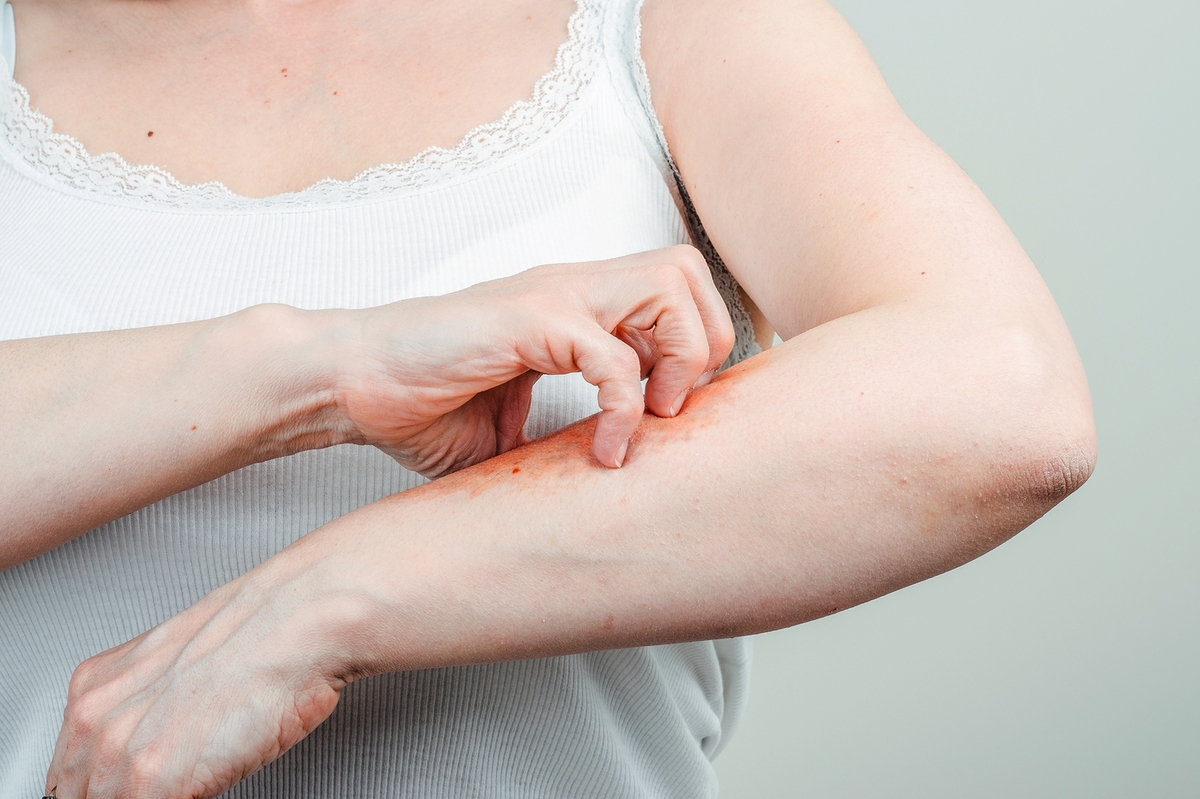Understanding Dermatomyositis Rash: Symptoms, Causes, and Treatment

Dermatomyositis is a rare inflammatory disease characterized by muscle weakness and a distinctive skin rash. This condition can affect both adults and children, leading to significant discomfort and potential complications if not properly managed. In this article, we will explore the symptoms, causes, and treatment options for dermatomyositis rash, providing a comprehensive overview for those seeking to understand this complex condition.
Dermatomyositis is an autoimmune disorder, meaning the body’s immune system mistakenly attacks its own tissues. The hallmark of this condition is a skin rash that often precedes or accompanies muscle weakness. The rash typically appears as a violet or dusky red discoloration, most commonly affecting the face, eyelids, knuckles, elbows, knees, chest, and back. This rash can be itchy and painful, adding to the discomfort experienced by those with dermatomyositis.
Symptoms of Dermatomyositis Rash
The symptoms of dermatomyositis rash can vary in severity and presentation. Common signs include:
- Heliotrope Rash : A purplish discoloration around the eyes, often accompanied by swelling.
- Gottron’s Papules : Raised, scaly bumps over the knuckles, elbows, and knees.
- Shawl Sign : A rash that appears on the shoulders, upper back, and neck, resembling a shawl.
- V-Sign : A rash that forms in a V-shape on the chest and neck.
- Mechanic’s Hands : Rough, cracked skin on the palms and sides of the fingers.
In addition to the skin manifestations, individuals with dermatomyositis may experience muscle weakness, particularly in the hips, thighs, shoulders, upper arms, and neck. This muscle weakness can make everyday activities challenging and may progress over time if not treated.
Causes and Risk Factors
The exact cause of dermatomyositis is not well understood, but it is believed to involve a combination of genetic and environmental factors. Some potential triggers include viral infections, certain medications, and exposure to ultraviolet (UV) light. Additionally, there may be a genetic predisposition that increases the likelihood of developing the condition.
Risk factors for dermatomyositis include:
- Age : Dermatomyositis can occur at any age, but it is most commonly diagnosed in adults between the ages of 40 and 60 and in children between the ages of 5 and 15.
- Gender : Women are more likely to develop dermatomyositis than men.
- Family History : A family history of autoimmune diseases may increase the risk of developing dermatomyositis.
Diagnosis and Treatment
Diagnosing dermatomyositis involves a combination of clinical evaluation, laboratory tests, and imaging studies. A dermatologist or rheumatologist may perform a skin biopsy to examine the affected tissue under a microscope. Blood tests can help identify specific antibodies associated with the condition, and electromyography (EMG) can assess muscle function.
Treatment for dermatomyositis aims to reduce inflammation, manage symptoms, and improve quality of life. Common treatment options include:
- Corticosteroids : These medications help reduce inflammation and suppress the immune system. They are often the first line of treatment for dermatomyositis.
- Immunosuppressive Drugs : Medications such as methotrexate or azathioprine may be prescribed to control the immune response and reduce inflammation.
- Physical Therapy : Regular exercise and physical therapy can help maintain muscle strength and improve mobility.
- Sun Protection : Since UV light can trigger or worsen the rash, it is important to use sunscreen and wear protective clothing when outdoors.
- Antimalarial Drugs : Medications like hydroxychloroquine can be effective in treating the skin symptoms of dermatomyositis.
Living with Dermatomyositis
Living with dermatomyositis can be challenging, but with proper management, individuals can lead fulfilling lives. It is important to work closely with healthcare providers to develop a personalized treatment plan. Regular follow-up appointments, adherence to prescribed medications, and lifestyle modifications can help manage symptoms and prevent complications.
Support groups and counseling can also be beneficial for individuals and families affected by dermatomyositis. Connecting with others who understand the condition can provide emotional support and valuable insights into coping strategies.
Dermatomyositis is a complex autoimmune disorder that requires careful management to control symptoms and improve quality of life. Understanding the symptoms, causes, and treatment options for dermatomyositis rash is essential for those affected by the condition. By working closely with healthcare providers and adopting a proactive approach to treatment, individuals with dermatomyositis can manage their symptoms effectively and maintain a good quality of life. If you or a loved one is experiencing symptoms of dermatomyositis, it is important to seek medical attention for an accurate diagnosis and appropriate treatment plan.



